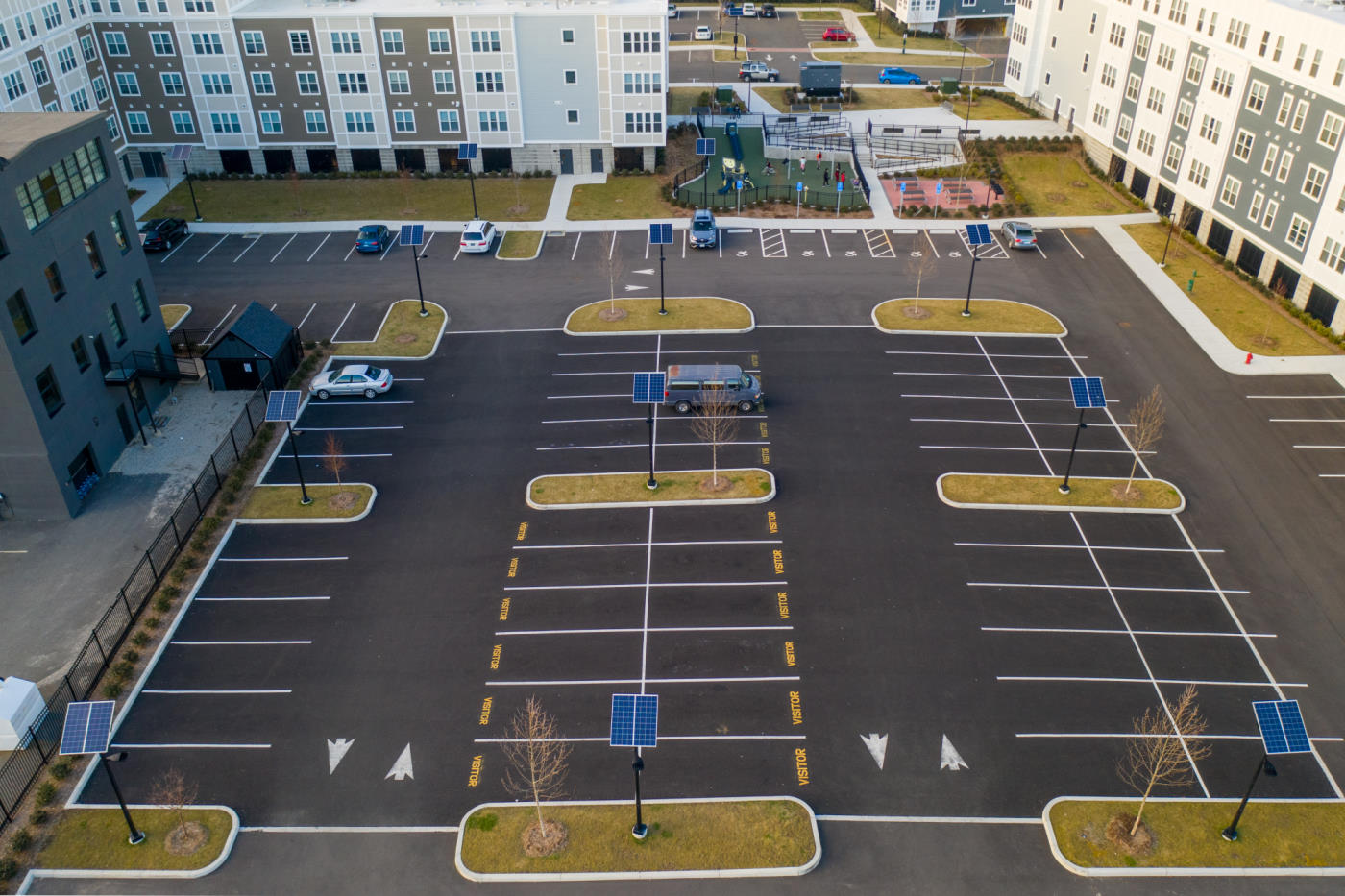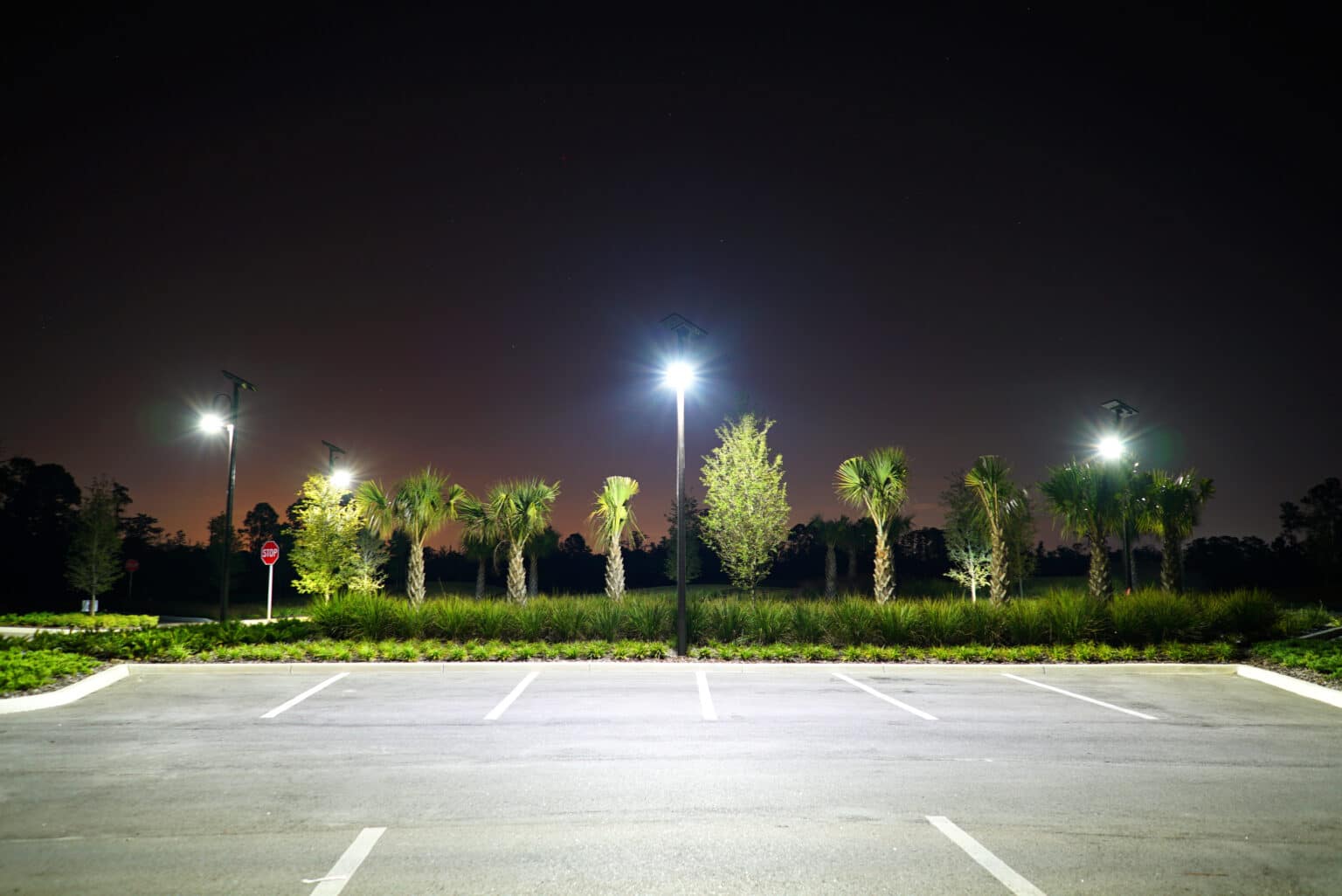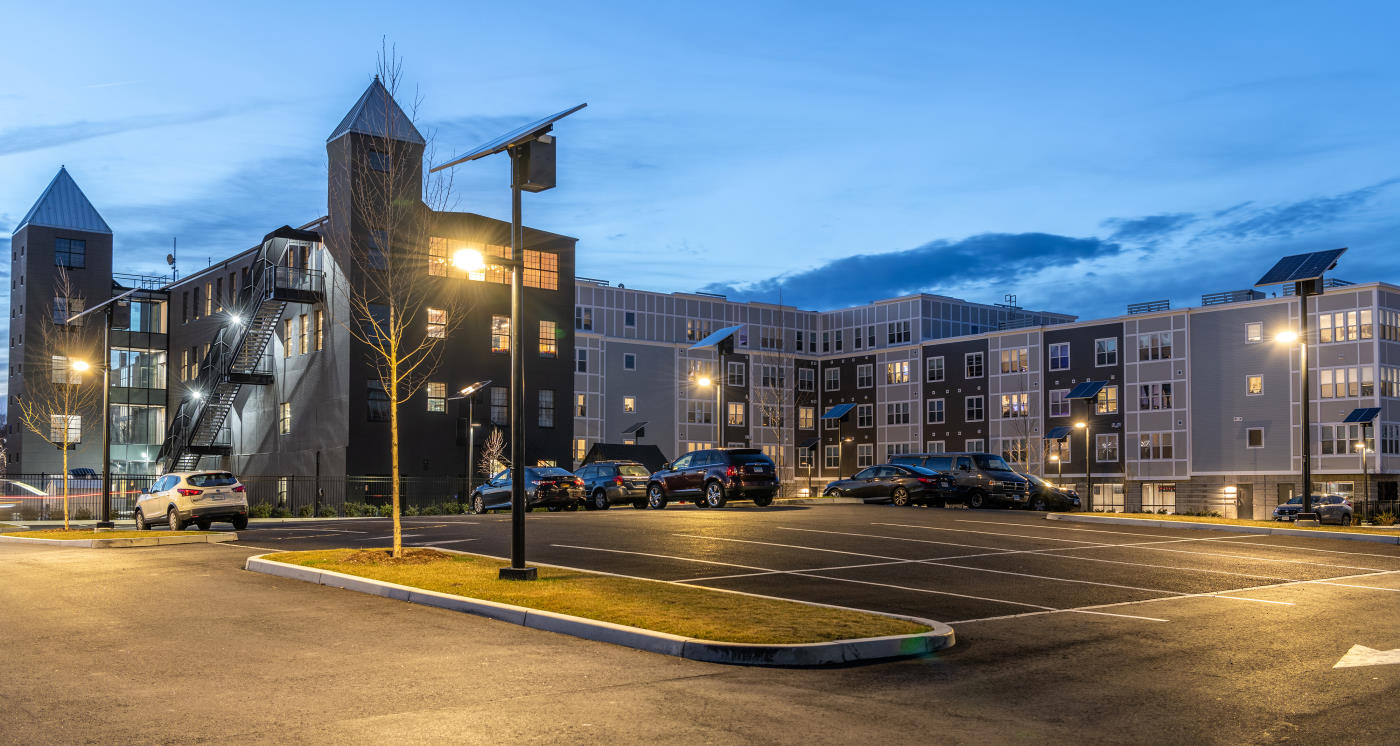
Parking lots require lighting to appear accessible, welcoming and open. Lights indicate that yes, this parking lot is available for you to park in. A well lit space can also provide a real sense of safety and security for your customers – nobody wants to linger in a dark parking lot!
Boost your curb appeal. Get in touch with us today to get started on your parking lot lighting project.

Outdoor solar lighting from Sol is hands-down the most cost effective option for illuminating your parking lot. Traditional electricity-sucking, grid-connected lighting cannot compare. Here’s how:
Setup – High efficiency light fixtures equals more light for less power. That means 3 Sol lights can produce the same amount of light as 8 traditional electric lights. As you can imagine, the savings really start to pile up when lighting an entire lot.
Installation – Sol lights can be installed in under 1 hour! Sol outdoor lighting does not require the labour intensive process of trenching to install fixtures and connect wires – not only is this activity time consuming and expensive, it’s destructive to your space.
Maintenance – Waiting on the unpredictable maintenance service that comes along with grid-connected lighting is no longer necessary. Solar-powered lighting requires little to no maintenance, as batteries have a roughly 10-year lifespan.
Theft – Municipalities have infamously dealt with copper wire theft since installing their grid-connected electric lighting. When wires are stolen, they not only have to replace the wires, but fix or reconnect the light fixture as well. Solar-powered lights contain no copper wires!
Energy use – Say goodbye to monthly electricity costs!

Sol carries an entire line of durable and efficient solar lighting products. From the UP Series, with its customizable operation profile and near universal compatibility with other products, to the iSSL Series, the world’s most reliable all-in-one solar lighting solution, Sol has a solution for your parking lot.
